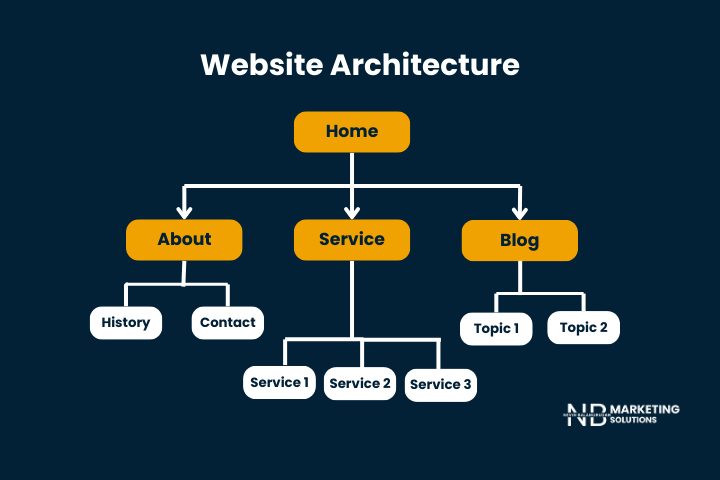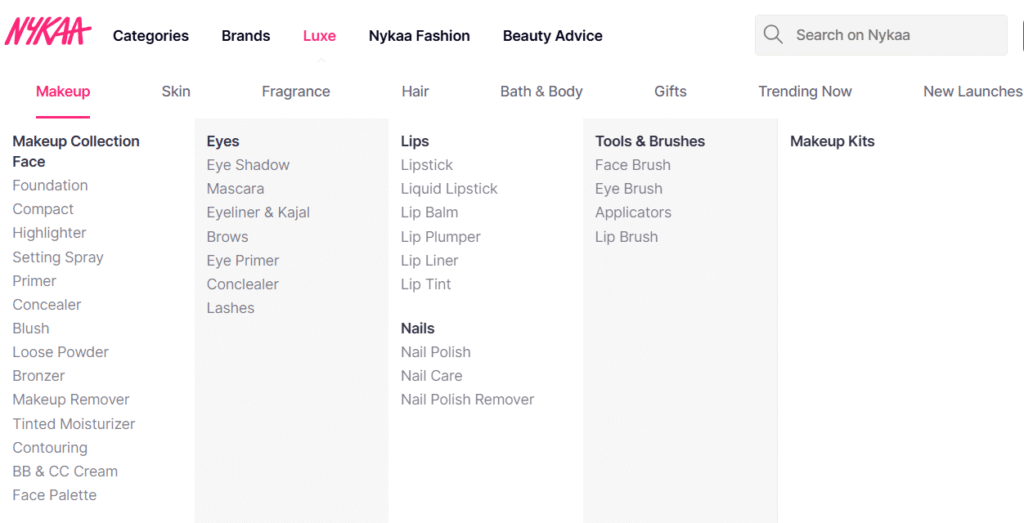What is Website Architecture: 6 Ways To Improve Site Structure
Abirami Dharmalingam
September 5, 2025

6 Easy Ways To Improve Website Architecture For SEO
Your website helps customers find what they need. Think about it: have you ever been lost in a new city? Frustrating, right? The same thing happens online. When visitors land on a website that’s jumbled and hard to navigate, they feel lost. So, what do visitors do? They leave.
Did you know that nearly half of the people exit a website after visiting just one page? That means you have only a few seconds to make a strong first impression. So, ask yourself – if someone visits your site right now, will they know exactly where to click next? Will they feel guided or confused?
If it occurs, your poor site structure sends negative signals to search engines. The result? Higher bounce rates and lower rankings. That’s why having a well-planned website architecture is key to keeping people on your site.
In this blog, we’ll explore what exactly website architecture is, and why it matters for both user experience (UX) and SEO. And most importantly, we’ll give you six best practices regarding website architecture.

What is Website Architecture?
Website architecture refers to the hierarchical structure of your website, showing how pages are arranged to one another. This structure is reflected through internal linking, which guides customers to easily find information and helps search engine crawlers to understand the relationship between webpages.
Here’s how it typically looks:

Why is Website Architecture Important For SEO?
Your website is useless if it doesn’t rank higher on Google. But that happens when you don’t build your website architecture without SEO.
When you incorporate SEO best practices during website architecture, you get the benefits:
- Improves crawlability: Search engines find it easy to crawl and understand your well-structured and highly optimized website to index your website faster and rank higher.
- Better user experience (UX): Customers can easily explore multiple pages that are clearly structured instead of dropping off.
- Less keyword cannibalization: Keyword cannibalization happens when you optimize multiple webpages for the same keyword. This does not occur on sites with a clear site structure.
- Drives conversion: Through a well-structured website, the path might be clear and making it easier for customers to find the products or services that they need.
Best Practices To Follow While Creating a Website Architecture For SEO
Let’s take a look at a few best practices you should keep in mind when structuring your website architecture for SEO.
- Keep your top-level navigation menu simple
- Optimize your URL
- Take a look at your competitor’s or industry experts’ website
- Keep up on keyword research
- Implement internal linking
- Use breadcrumbs
1. Keep your top-level navigation menu simple
Your website hierarchy allows search engine bots to quickly find and index your content, so your search visibility improves.
So, first, don’t add too many menu items on the top-level. But it doesn’t require all niche, certain niches (like food, fashion, etc) can have many menu items to navigate customers. Next, deliver the content or sub-menu based on the top-level menu name.
For instance, if your customer clicks on the "Digital Marketing" tab on your website homepage, they expect to be directed to a list of digital marketing services. Moreover, you also need to design a simple path to get your customers back to your website’s homepage.
Check out an example below:

Image Credits: Nykaa
Don’t make your customers think too hard. If you use a hard-to-navigate website architecture, you will get a high bounce rate. Customers don’t want to waste time trying to find information on your site. If they do, they’ll just leave.
2. Optimize your URL
Nobody wants to click on a messy, complicated URL like this:
company.com/store/rackets/text=The%20search%20engine%20optimization%20services%20market%20size%20has%20grown%20rapidly,(CAGR)%20of%2018.3%25.
It’s confusing, hard to read, and gives no hint about what the page is about. On the other hand, a user-friendly URL sets the right expectations and improves trust. For example:
company.com/page-title
Most content management systems (CMS) like WordPress can automatically generate short, readable URLs based on your page title. Moreover, you can also use subdirectories to improve clarity,
company.com/topic/subtopic/page-title
This helps both customers and search engines instantly know where they are and what to expect.
Best Practices for SEO-Friendly URLs:
- Use keywords: You can include your primary keyword related to the content that helps both customers and search engines understand what the page is about.
- Keep it short: Aim for 3 - 5 words if possible. Keep your URLs short up to 128 characters or less. Short URLs are easier to share and remember.
- Use hyphens, not underscores: Search engines treat hyphens as spaces, which makes URLs more readable.
- Avoid stop words when possible: Words like and, or, of aren’t necessary unless they add clarity.
This makes your URLs readable at a glance. If a customer sees your URL without context, they can understand what the page is about.

3. Take a look at your competitor’s or industry experts’ website
When it comes to website architecture, you don’t have to reinvent. Your customers are already familiar with the leading brands in your industry’s website architecture – so why can’t you learn from them?
For instance, if you run an e-commerce store, study how Amazon or Flipkart organizes categories, filters, and navigation. We’re sure that their website feels intuitive because shoppers know exactly where to look for products. By modeling your own structure on proven patterns, you create a sense of familiarity that makes your site easier to navigate.
Of course, this doesn’t mean copying every detail. Instead:
- Look for common patterns: Do top competitors use a simple menu with clear product categories? Are products grouped under a single tab?
- Look at the user experience: Major brands lead customers from browsing to checkout with minimal friction.
- Adapt to your audience size: Brands like Amazon have millions of customers, so their navigation is complex but still manageable. If you’re a smaller e-commerce store, keep things simple so customers don’t feel overwhelmed.
- Add your unique touch: Add your own model with your brand voice or design.
When visitors land on your website, they already have certain expectations based on the big brands they’ve interacted with. By meeting those same expectations with your website build trust and drive conversion.
4. Keep up on Keyword Research
You can have the best website architecture for SEO, but you won’t get traffic if you fail to create content about topics people are looking for.
So, use keyword research to target your audience for what they are searching for. That way, you can optimize your homepage, top-level menu pages, and all other sub-category pages to create high traffic.
You can use a keyword tool like Google Keyword Planner to choose the right keywords to create content. It offers extensive keyword data and insights to improve your website traffic. Have no idea about Google Keyword Planner. Read our blog How To Use Google Ads Keyword Planner For SEO in 2025 to learn about it.
5. Implement internal linking
One of the most effective strategies for website architecture for SEO is the pillar-cluster model.
Here’s how it works: you start with a pillar page – a comprehensive resource that covers a broad topic. From there, you create cluster pages that take your customers into related subtopics. The pillar links out to each cluster, and those clusters also link back to the pillar and to each other. So, your website feels intuitive and easy to navigate.
6. Use breadcrumbs
Breadcrumbs are one of the simplest yet most powerful ways to show your website’s structure. Think of them as a mini navigation trail that tells customers exactly where they are. Typically placed above the page title, breadcrumbs display the parent pages all the way back to the homepage, often separated by arrows ( › ).

So, Design Your Website Architecture For SEO To Improve Your Site
Website architecture is important for both user experience and SEO. With a solid website structuring strategy, you’ll improve dwell time and entice customers to consume your content and drive specific action. That means you can improve your ROI.
Need expert advice? Contact NB Marketing Solutions to get a free consultation and strategies to design your website architecture relevant to your brand.
Recent Posts
Have Any Question?
- (+91) 938-542-1049
- info@nbmarketingsolutions.in
Categories
Make Appointment
Confused Over Choosing The Right Services For Your Business?
Tamil Nadu, India
- Near TMB Bank, Anjugramam post, Kanyakumari 629401
- info@nbmarketingsolutions.in
- (+91)93-8542-1049
